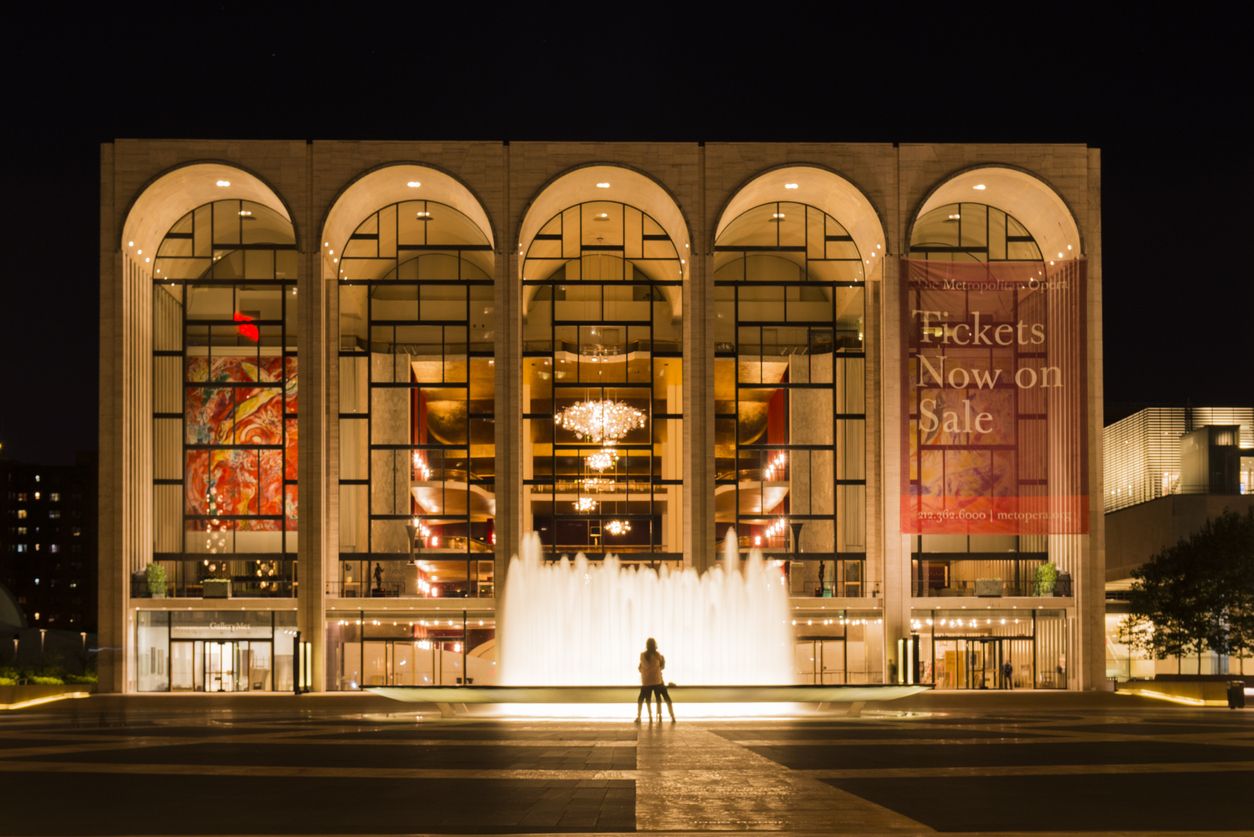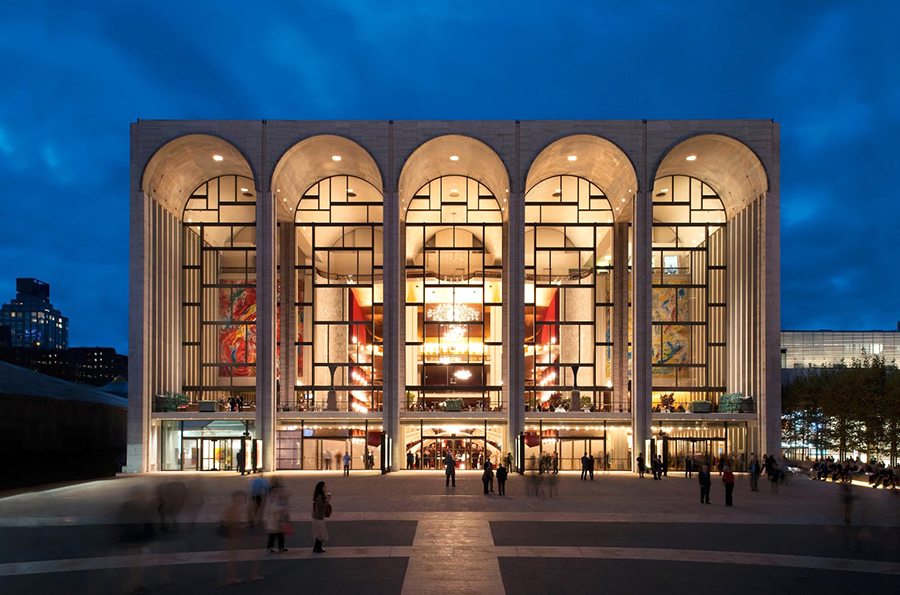Table Of Content

You’ll hear a conversation between Untapped New York founder Michelle Young and Justin Rivers, who recently gave a talk on this subject for our Insiders, along with excerpts from his talk. It’s kind of like The Ted Radio Hour, but for obscure New York City history. The stage facilities, state of the art when the theater was built, continue to be updated technically and are capable of handling multiple large complex opera productions simultaneously. When the opera company is on hiatus, the Opera House is annually home to the spring season of American Ballet Theatre. Each season, the Met stages more than 200 opera performances in New York. More than 800,000 people attend the performances in the opera house during the season, and millions more experience the Met through new media distribution initiatives and state-of-the-art technology.
SO WHAT IS THE POINT OF THE MET GALA?
The Metropolitan Opera House (also known as The Met) is an opera house located on Broadway at Lincoln Square on the Upper West Side of Manhattan in New York City. Part of Lincoln Center, the theater was designed by Wallace K. Harrison. It opened in 1966, replacing the original 1883 Metropolitan Opera House at Broadway and 39th Street. With a seating capacity of approximately 3,850, the house is the largest repertory opera house in the world.[1] Home to the Metropolitan Opera Company, the facility also hosts the American Ballet Theatre in the summer months. Carrie Cracknell’s electrifying modern-day staging stars Clémentine Margaine, reprising her captivating portrayal of the title role, and Michael Fabiano, who makes his company role debut as Don José.
Title languages displayed for
FM broadcasts were added in the 1950s, transmitted to stations via telephone lines. Starting with the 1973–74 season, all broadcasts were offered in FM stereo. Satellite technology later allowed uniformly excellent broadcast sound to be sent live worldwide.
Killer of Yucaipa good Samaritan sentenced to life without parole

Anthony Davis’s groundbreaking and influential opera, which premiered in 1986, arrives at the Met at long last. Theater luminary and Tony-nominated director of Slave Play Robert O’Hara oversees a potent new staging that imagines Malcolm as an Everyman whose story transcends time and space. An exceptional cast of breakout artists and young Met stars enliven the operatic retelling of the civil rights leader’s life. Kazem Abdullah conducts the newly revised score, which provides a layered, jazz-inflected setting for the esteemed writer Thulani Davis’s libretto.
His collaborator on Carmen was Ludovic Halévy (1834–1908), the nephew of composer Jacques Fromental Halévy (creator of the opera La Juive and Bizet’s father-in-law). The libretto is based on a novella by Prosper Mérimée (1803–1870), a French dramatist, historian, and archaeologist. Hänsel und Gretel was the first complete opera broadcast from the Met on Christmas Day 1931. Regular Saturday afternoon live broadcasts quickly made the Met a permanent presence in communities throughout the United States and Canada.
It was excruciating to watch his energy amass into something so inherently wicked and perverse. One might never forget him hastily downing his glass of champagne as he snorted back a thick line of cocaine. “We are shaken through the music and questioning how we want to be in this world. Looking at the news and the chaos we are experiencing, I think the question at the center of ‘El Niño’ is about who we are as human beings and how we want to move forward.
Humane Society of San Bernardino Valley offers Critter Camp in June
The debut opera was Vincenzo Bellini’s Norma and The Academy of Music became an institution overnight. It was a versatile space that could be used not only for opera, but also for balls and receptions. Notable patrons included the Prince of Wales, Abraham Lincoln, and his wife Mary Todd. It was a place to see and be seen, with the patrons much more interested in observing each other than watching opera. As for the documentary itself, coproduced and introduced by current Met general manager Peter Gelb, it is not a project without conflicts of interest wider than Pavarotti’s cummerbund.
Cape Town to Cairo Tour
The Met was founded in 1883 as an alternative to the previously established Academy of Music opera house and debuted the same year in a new building on 39th and Broadway (now known as the "Old Met").[3] It moved to the new Lincoln Center location in 1966. The opera takes place in and around Seville, a city that, by the time Carmen was written, had already served many operatic composers as an exotic setting conducive to erotic intrigues and turmoil (Rossini’s Il Barbiere di Siviglia and Verdi’s La Forza del Destino, among others). The hometown of Don Juan, the city also inspired Mozart with Don Giovanni, and Beethoven used Seville as the setting for a study of marital fidelity in Fidelio. Georges Bizet (1838–1875) was known as a brilliant student and prodigy, but his works only found lasting success after his untimely death—most notably Carmen, which premiered three months before he died. Librettist Henri Meilhac (1831–1897) would subsequently provide the libretto for Massenet’s Manon (1884).
The Met Opera's 'Romeo Et Juliette' Star Nadine Sierra Talks Travel And Opera - Forbes
The Met Opera's 'Romeo Et Juliette' Star Nadine Sierra Talks Travel And Opera.
Posted: Tue, 19 Mar 2024 07:00:00 GMT [source]
Longtime San Bernardino resident Janet Miles, who died in 2008 at age 107, recalled in her memoirs (published by the San Bernardino Historical and Pioneer Society in 1994) there were box seats on the north and south walls with red velvet curtains at the rear. Birdie Bohan and Edith Ulrich were the pianists, Ernest De Soto, the violinist, and Mr. Parsons played the drums. National companies on tour introduced both grand and light opera performances. Entering the museum, guests walk past what is usually an impossibly enormous flower arrangement in the lobby, with perhaps an orchestra playing nearby, and over to cocktails. To 8 p.m., followed by dinner, but the most famous — or those who plan to make the biggest entrance — sometimes come (fashionably) later. Soprano Julia Bullock’s voice blossomed as she described the story of her discovery in “Hail Mary, Gracious!
Outside of New York the Met has been known to audiences in large measure through its many years of live radio broadcasts. The Met's broadcast history goes back to January 1910 when radio pioneer Lee de Forest broadcast experimentally, with erratic signal, two live performances from the stage of the Met that were reportedly heard as far away as Newark, New Jersey. Today the annual Met broadcast season typically begins the first week of December and offers twenty live Saturday matinée performances through May.
Unofficially, it’s the party of the year, the Oscars of the East Coast and “an A.T.M. for the Met” (the last according to the publicist Paul Wilmot). Consider that last year’s event raised almost $22 million, while the Met’s Art & Artists Gala raised $4.4 million. Even Moses’s supporters, and there are many, who argue that his take-no-prisoners vision was necessary and ultimately for the good might fairly ask, “Where did all those people go? ” Indeed, there is no point in this documentary when it appears like an independent biography of the Met building but rather like something that could comfortably be discussed in the Dress Circle Lounge at intermission. An early Wallace K. Harrison design for the new opera house at Lincoln Center.
If you lived in this area during the early 20th century, you didn’t need to travel far to see the great stars of the theatrical world. The theme is accompanied by a dress code — this year, it’s “The Garden of Time.” The theme and dress code are often interpreted ... But it’s the carpet itself that draws the world’s eyes, with the 400-strong guest list the subject of rabid speculation until the last minute — a collection of luminaries that arguably makes for the highest celebrity wattage-per-square-foot of any party in the world.
Rosario Castellano’s poem “Memorial de Tlatelolco” is where Part two climaxes, however the lead up to this point must be described first. The libretto is adapted by Peter Sellars and John Adams from poems by Rosario Castellanos, Gabriela Mistral, Hildegard von Bingen, Sor Juana Inés de la Cruz, Rubén Darío, Vicente Huidobro, Martin Luther, and texts from the King James Bible, The Wakefield Mystery Plays and gnostic gospels. This vast spectrum of interpretation creates the body of “El Niño,” resonating a rare fecundity that outweighs efforts of the mind and instead speaks directly to the heart. Discover the city’s most unique and surprising places and events for the curious mind.
Even so, the Old Met will face the chopping block in the mid-20th century, a story detailed in both the podcast in a previous article. The Astor Place Opera House is the first of the big purpose-built opera houses and one of the most famous of the lost opera houses. As its name suggests, it was located at Astor Place, on the wedge of land bounded by Lafayette Street, East 8th Street and St. Mark’s Place. The Astor Place Opera House was conceived by a man by the name of Edward Frey, an impresario who managed the opera house during its entire, short-lived history. New York City’s lost opera houses are having their fifteen minutes of fame, thanks to the HBO show, The Gilded Age, which brought their dramatic histories to life in the most recent season. We dug into these former opera houses in a new extended episode of the Untapped New York podcast which weaves in clips from The Gilded Age, which were kindly provided to us by HBO.
No comments:
Post a Comment